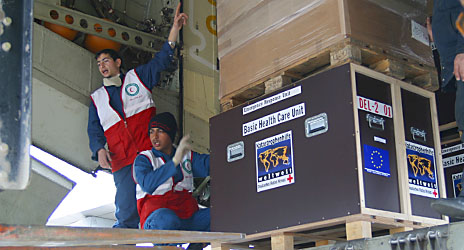Emergency Response Units: deployment

ERU deployment depends largely on the following factors:
magnitude and evolution of the disaster;
needs of vulnerable people;
capacity of the host National Society and other available relief capacities;
International Federation resources (human, financial and material) available
If a Field Assessment and Coordination Team (FACT) assessment or disaster response plan recommends the deployment of one or more ERU units, specific requests are made for the type required, such as water and sanitation or basic health care. National Societies sponsoring the ERUs then consider making them available.
The Deputy Director of the Secretariat's Coordination & Programmes Division makes the final decision on deployment, based on the assessment report and advice from technical departments such as health, logistics, field support and telecommunications. If the go-ahead is given, ERUs form part of the Federation's emergency response.
Once the sponsoring National Society receives a deployment order, all material and equipment should be ready for dispatch within 48 hours. The ERU is operational in the field within a week.
During the first month, the ERU gradually integrates into existing local systems and structures. The unit completely hands over to the host National Society, Federation delegation or local authority within four months, the maximum life of an ERU. After this, unit team members either return home or are absorbed into the local delegation.